Best Taxi Booking Apps in USA Today


Mobion has watched the shift happen in real time. Ten years ago, a late-night ride in New York meant standing on the curb, arm out, hoping a cab would stop. Today the same ride begins with a phone screen glowing in someone’s hand. Open a taxi booking app, see the fare, watch the car icon move closer. Simple, almost automatic.
It is not just big cities. In places like Denver or Nashville, riders now expect the same speed and clarity. Students heading to class, workers catching an early shift, parents on school runs — all of them use the same routine. Drivers benefit too, though in quieter ways: fewer empty trips, less waiting in the wrong part of town.
This everyday mix of habits is what defines mobility now. And for us at Mobion, it shows how technology has become part of the city’s pulse rather than an add-on convenience.
Let’s take a closer look at the best taxi booking apps in the USA.
Future Perspectives of Taxi App Solution in the USA
We at Mobion are seeing clear signs that the U.S. ride services market is entering a new era. According to a report by BusinessResearchInsights, the global ride-hailing and taxi market was valued at USD 331 billion in 2025 and could reach USD 978 billion by 2034, growing at a CAGR of about 12.6 %.
Business Research Insights
In the U.S., the shift toward an online taxi booking system is now undeniable, with digital platforms capturing more than 85 % of all ride reservations. Passengers clearly prefer fast matching, transparent fares, and secure payment options
Global Market Insights Inc.
Electric vehicle (EV) adoption among ride-hailing drivers remains small but is steadily rising. Less than 1 % of rideshare miles today are in EVs. Barriers still include vehicle cost, charging availability, and income concerns. More than 90 % of EV-driving rideshare operators charge at home rather than relying on public stations.
RMI
Looking ahead, the real winners will be services that combine multiple transit modes—cars, bikes, scooters—while offering affordable EV choices and smooth user experiences. For riders, the best taxi apps in the U.S. will be those that merge convenience with sustainability.
Now let’s take a closer look at the top taxi apps in the USA, starting with the leaders of this market.
Top 11 Taxi Booking Apps in the USA
- Uber
- Lyft
- Bolt
- Curb
- Via
- Gett
- Wingz
- Arro
- Juno
- zTrip
- Flywheel
Uber
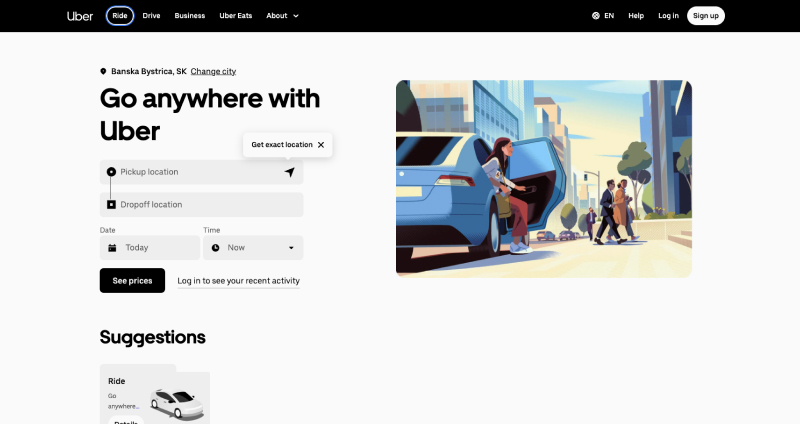
Service Overview
Uber’s story started in San Francisco in 2009 with one clear idea: no more waiting on the street, just tap your phone and the ride comes to you. Since then it has turned into something far bigger. At Mobion, we see how it blends into everyday life — a student in Boston ordering a car after evening classes, a group of friends in Chicago splitting the fare home, or a family in Dallas booking a ride to the airport before dawn. The basics remain simple. Open the app, see the fare, pick a car, confirm. What makes people trust it is not just speed but predictability: cashless payment, real-time tracking, and a rating system that feels fair.
Key Features
- Book instantly or schedule in advance
- GPS tracking for both driver and route
- Multiple ride options, from budget to premium
- Split fare function for groups
- Upfront pricing with no need for cash
Global Presence
By mid-2025, Uber counted about 180 million monthly riders and over 8.8 million active drivers. It operates in nearly 70 countries and more than 15,000 cities. In the second quarter alone, passengers booked more than 3.2 billion trips, bringing the first half of the year to almost 6.3 billion rides. These numbers are staggering, but on the ground they mean something simpler: in much of the world, Uber has become the default way to get from point A to point B.
Lyft
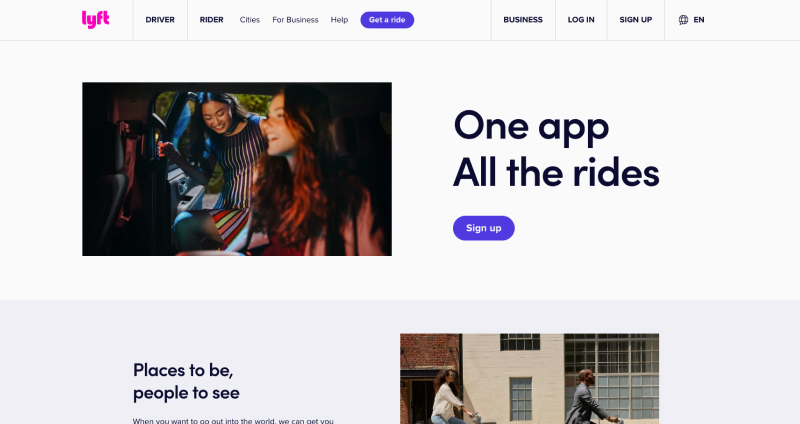
Service Overview
Launched in 2012 in San Francisco, Lyft positioned itself as a friendlier and more community-driven alternative in ride-hailing. At Mobion, we notice how many riders choose it when they want a simple, stress-free trip with clear pricing and a straightforward app design. Lyft allows users to book rides instantly or schedule them in advance, view estimated fares before confirming, and pick from several vehicle types. Over the years it has built a reputation as one of the best taxi app choices in the U.S., especially in cities where competition with Uber remains close.
Key Features
- Economy to premium ride options
- Upfront pricing and fare estimates
- Split fare for groups of friends
- Schedule rides ahead of time
- Payments with cards or digital wallets
Global Presence
Lyft remains smaller than Uber, but its footprint is significant. In Q2 2025, the company reported about 26.1 million active riders, nearly 235 million trips, and more than $4.4 billion in bookings. Growth was close to double digits year over year. Most operations are still in the U.S. and Canada, but the recent acquisition of FreeNow opened doors in Europe, giving Lyft a chance to expand its reach beyond North America.
Bolt
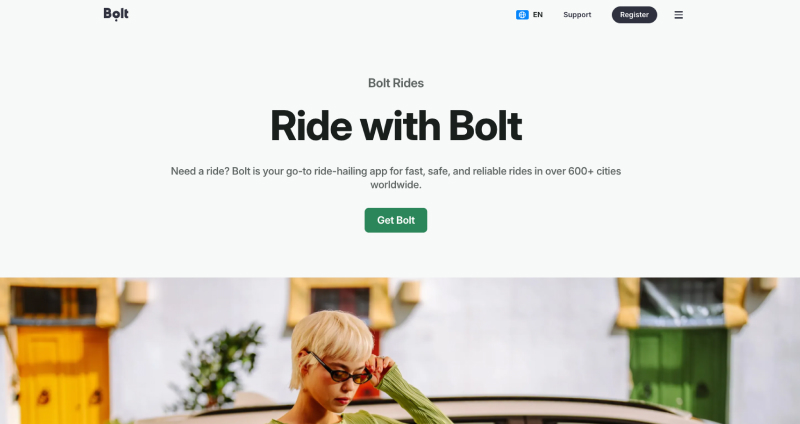
Service Overview
Bolt began life in Tallinn back in 2013, at first known as Taxify. What started as a small project is now woven into daily routines across dozens of countries. At Mobion, we notice that riders don’t just think of Bolt as a taxi app — many describe it as a flexible tool that changes with their needs. A student in Lisbon might book a budget ride to campus in the morning, then unlock an e-scooter for the ride home. In Nairobi, commuters use it because the fares are often lower than local cab companies. The design is straightforward, booking takes seconds, and discounts appear often enough to keep people checking back. Among the global players, Bolt has also positioned itself as an online taxi booking app that adapts to local markets while keeping the same simple, fast experience everywhere.
Key Features
- Request rides instantly or schedule them ahead
- Mix of cars, e-scooters, and bikes in one platform
- Upfront fare estimates before confirming
- Wide range of cashless payment options
- Frequent discounts and affordable ride tiers
Global Presence
By 2024, Bolt reported over 150 million customers using its services in more than 45 countries and 500 cities. Its strongest base is in Europe and Africa, though it has also moved into parts of Asia and Latin America. Revenue passed €2 billion in 2024, a sign of how quickly demand is climbing. Bolt may not yet rival Uber in the U.S., but internationally it has established itself as one of the most dynamic ride-hailing platforms.
Curb
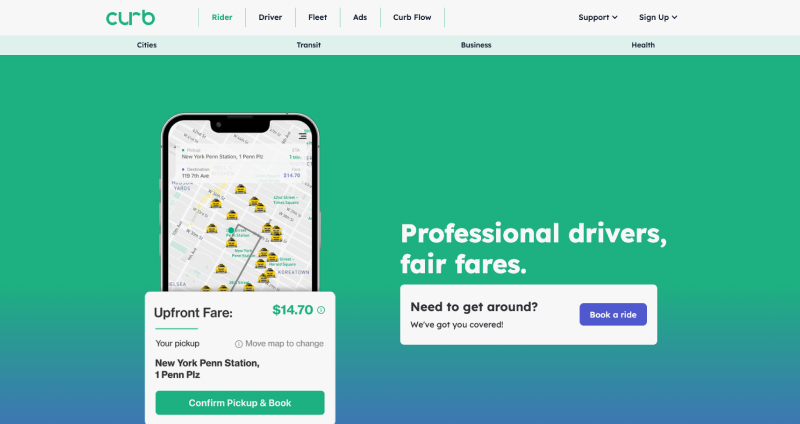
Service Overview
Curb grew out of the traditional taxi industry and has become one of the most established USA taxi app options for riders who still prefer licensed cabs but want modern convenience. At Mobion, we see how it appeals to passengers who trust regulated drivers and official taxi fleets, yet appreciate the ability to book through an app instead of waving from the curb. Curb offers upfront pricing, cashless payments, and the option to choose standard taxis or wheelchair-accessible vehicles in many cities. It blends the old and the new, keeping the reliability of yellow cabs while delivering the simplicity of digital booking.
Key Features
- Instant “Ride Now” and scheduled “Ride Later” bookings
- Upfront fare estimates before confirming
- Licensed taxis and accessible vehicles
- Contactless payments through cards and digital wallets
- Real-time driver assignment and trip updates
Global Presence
Curb connects more than 100,000 professional drivers across about 60 U.S. cities, including New York, Chicago, Los Angeles, and Miami. Its network includes roughly 35,000 taxis under 90 fleets, making it one of the largest regulated taxi platforms in the country. The company facilitates over 10 million rides per month and also operates Curb Taxi Media, which reaches around 20 million people daily through in-vehicle screens and advertising.
Via
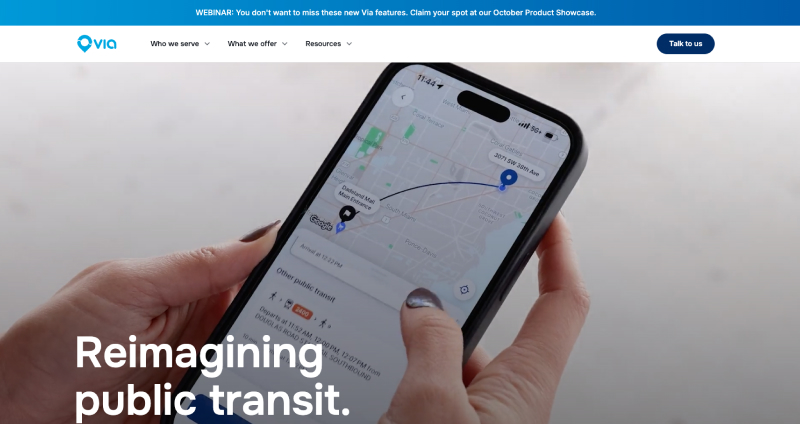
Service Overview
Via began in 2012 in New York City with a vision to make ride-sharing smarter, cheaper, and more efficient. At Mobion, we notice riders turning to Via when they don’t just want a solo ride, but something more communal—rides shared with others heading in the same direction, or transit partners plugging in gaps in public transport. It serves commuters who prefer pooling to save money, or who need flexible shuttle-type services in neighborhoods where buses run less often. The app is clean, the booking simple, and the shared-ride model means fewer cars on the road and lower fares per rider. Among the many taxi apps in USA, Via stands out because of this focus on shared mobility and collaboration with local transit networks.
Key Features
- Real-time ride-pooling / shared rides to reduce individual fare
- Options to join a shuttle or transit partner service
- Transparent fare before booking, even for shared options
- Schedule or request rides instantly
- Route optimization to reduce detours and waiting
Global Presence
Via operates globally in two major ways: directly with shared rides and through partnerships with city transit agencies. As of March 2024, the company serves more than 700 partners worldwide, including public agencies like King County Metro in Seattle, Transport for London, Transport for New South Wales, and others. Many of its services are demand-responsive transit (microtransit), especially in suburban or less dense areas. Via has also acquired Citymapper’s transit planning tools to strengthen its routing and coverage.
Gett

Service Overview
Morning in London. A line of black cabs moves slowly past Paddington Station. Some passengers raise their hands, but many just reach for Gett. The company began in Tel Aviv in 2010 under the name GetTaxi, and its appeal has always been the same — licensed drivers, no guessing on fares, no last-minute surge. At Mobion, we often hear people call it the safe option. Not as flashy as Uber, not as cheap as Bolt, but steady. Firms use it to move staff between offices, or to get teams to the airport on time. For them, predictability matters more than variety. That is the niche Gett chose. An app for taxi riders who value routine over risk.
Key Features
- Licensed fleets with fixed fares
- Tools for corporate billing and reports
- Book instantly or plan in advance
- Transparent pricing, minimal surge
- Digital payments accepted
Global Presence
Gett is now based in London and active in more than a hundred European cities. In mid-2024, a deal worth about 175 million dollars confirmed its role in the corporate mobility space. Thousands of firms still rely on it week after week, proof that in a crowded market there is room for an app that promises reliability first.
Wingz
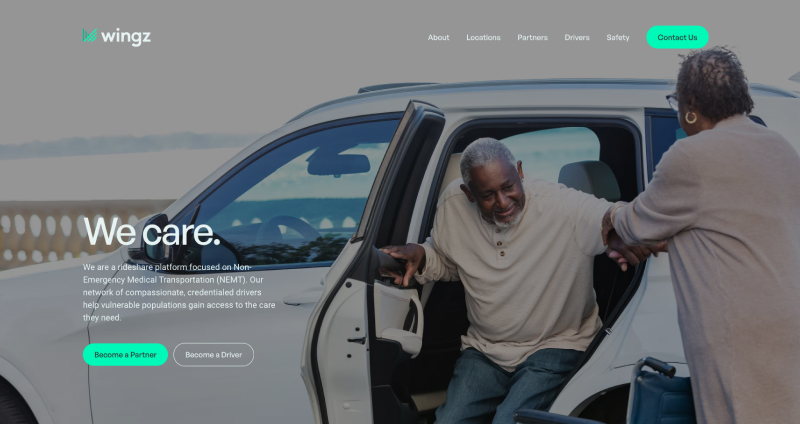
Service Overview
Imagine landing at LAX after a long flight. Instead of scrambling for a last-minute ride, the car you booked days ago is already waiting. That is the promise of Wingz. Launched in San Francisco in 2011, the service took a different path from the big ride-hailing names. It built its model around pre-scheduled trips, especially airport runs, and slowly added personal touches that made it stand out. At Mobion, we see Wingz as more than just another taxi cab app — it is designed for people who like certainty. Passengers can even re-book their favorite drivers, which makes the experience feel closer to a private service than a random pickup.
Key Features
- Schedule rides days in advance with guaranteed pickup
- Option to request favorite drivers
- Flat-rate pricing with no surprises
- Airport specialists across major hubs
- Cashless payments
Global Presence
Wingz is available in over 30 U.S. cities, with its strongest presence around airports like San Francisco, Los Angeles, Dallas, and Houston. The company never tried to match Uber or Lyft in size. Instead, it carved out a niche by focusing on reliability and loyalty. That strategy has created a steady base of repeat travelers who know their driver will be there, even at 5 a.m. on a Monday.
Arro
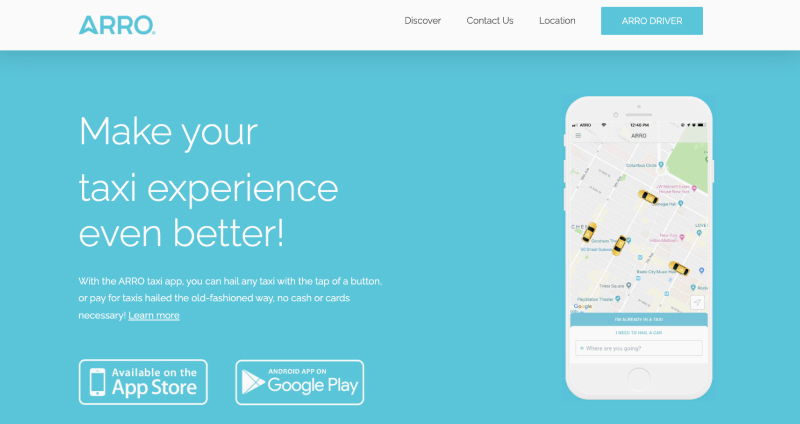
Service Overview
On a rainy night in Manhattan, yellow cabs still fill the streets, but many riders no longer raise a hand to hail them. They open Arro instead. The app connects directly with licensed taxis, letting passengers book a cab, pay through the phone, and skip the hassle of carrying cash. At Mobion, we often describe Arro as a bridge between tradition and modern habits. It keeps the look and trust of classic yellow cabs while adding the speed and clarity of digital booking. For commuters who prefer regulated fleets to private drivers, Arro feels like a natural fit. Some riders even call it the best taxi app in usa because it modernizes a service they already know.
Key Features
- Instant booking of licensed yellow cabs
- Integration with taxi meters for accurate fares
- Cashless payments via cards and wallets
- Digital receipts for easier reporting
- Service available in multiple U.S. cities
Global Presence
Arro’s footprint is strongest in the United States, with service in cities like New York, Chicago, San Francisco, and Miami. By working directly with taxi authorities, Arro ensures licensed drivers and consistent fares. It may not have the global reach of Uber or Bolt, but for passengers who value the mix of tradition and technology, Arro offers a dependable choice.
Juno

Service Overview
Juno launched in New York City in 2016 with a simple mission: treat drivers better and, in return, offer riders a friendlier service. It quickly built a reputation for clean cars, polite drivers, and lower commission rates that made it popular among professionals moving through Manhattan and Brooklyn. At Mobion, we remember how Juno positioned itself as a people-first alternative in a crowded ride-hailing scene. The app looked and felt like any modern online taxi booking app, but the promise was different — a community built on respect between drivers and passengers. Even though Juno was later acquired and folded into Gett, it left a mark on how riders thought about fair treatment in urban transport.
Key Features
- Focus on professional, well-rated drivers
- Competitive fares with lower commission fees
- Clean interface for quick booking
- Options for private and shared rides
- Emphasis on customer and driver satisfaction
Global Presence
Juno operated primarily in New York City, where it served thousands of daily riders at its peak. While it no longer runs as a standalone service after its acquisition by Gett in 2017, its influence remains visible. Many corporate clients who use Gett today still associate the platform with Juno’s early focus on fairness and service quality.
zTrip
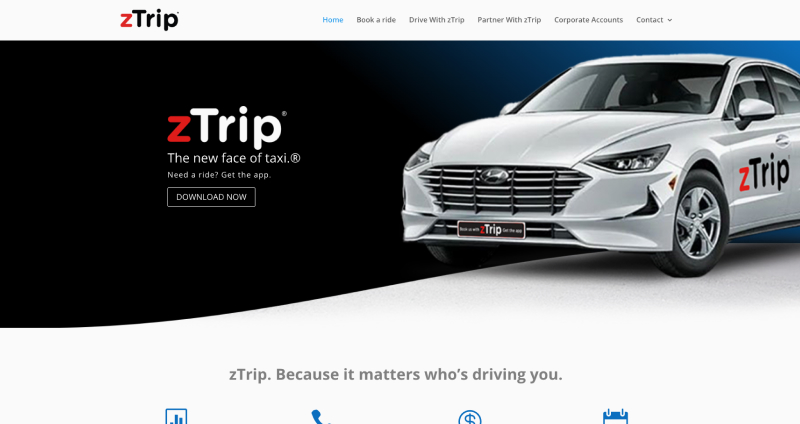
Service Overview
zTrip promotes itself as a “new kind of taxi service,” combining the structure of licensed fleets with the ease of app-based booking. Founded in 2015, it quickly expanded across the U.S. by offering both on-demand rides and the ability to schedule trips in advance. At Mobion, we see zTrip as the option for passengers who want something between the spontaneity of Uber and the reliability of a traditional cab. The platform has grown steadily by positioning itself as a dependable taxi booking app that keeps professional drivers at the center of the experience.
Key Features
- Book instantly or reserve rides in advance
- Licensed drivers with background checks
- Options for standard taxis, vans, and wheelchair-accessible vehicles
- Upfront pricing with no surge surprises
- Multiple payment methods, including cashless options
Global Presence
zTrip operates in more than 30 U.S. cities, including Denver, Kansas City, Orlando, and Pittsburgh. It manages a fleet of thousands of vehicles and markets itself as the largest taxi operation in America that combines both traditional dispatch and app-based requests. While it does not compete globally like Uber or Bolt, its strong presence in the United States makes it a trusted name for passengers looking for professional drivers backed by regulated fleets.
Flywheel
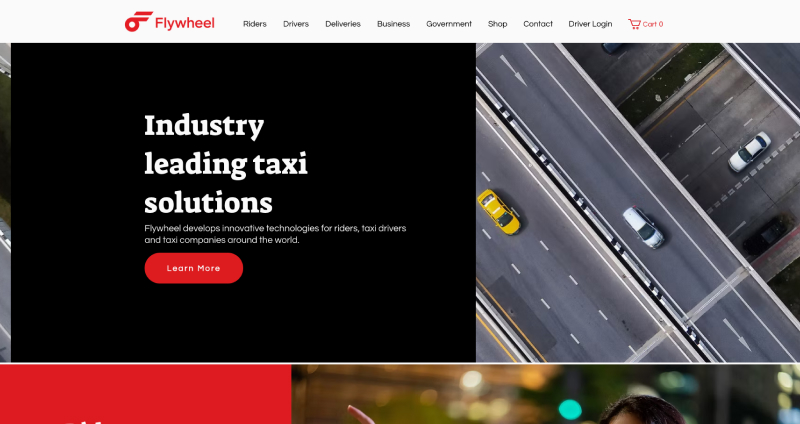
Service Overview
Fog on Market Street. Horns, wet asphalt, a quick glance at the phone. Flywheel grew out of San Francisco’s taxi scene to make hailing feel less hit-or-miss. You tap, a licensed cab accepts, the meter sets the price, a receipt shows up later. That’s it. At Mobion, we think of it as the taxi system with a better interface rather than a brand-new idea. Riders like the familiarity of a cab and the calm of knowing the fare comes from the meter. Among online taxi booking options in the Bay Area, Flywheel is the one that keeps the old rules but removes the sidewalk guesswork. Short waits. No cash. Fewer surprises.
Key Features
- Tap to hail a licensed taxi
- Meter-based, regulated fares
- Live driver location and reliable ETAs
- Cashless pay with automatic receipts
- Standard and wheelchair-accessible cars
Global Presence
Flywheel stays close to home. Strongest in California — San Francisco, San Jose, parts of Los Angeles — with partnerships that plug directly into existing fleets. It focuses on making taxis easier to use rather than scaling everywhere. That local approach wins loyal riders who still want a yellow cab, just without the curbside wave.
Choosing the Right Taxi App Development Company
Building a taxi platform isn’t only about code. The choice of a development team can decide if the service grows smoothly or fails during its first busy weekend. Too many founders learn the hard way: the demo works, but once drivers and passengers start using it, the system slows, payments fail, and complaints arrive.
Questions Worth Asking
- Have they delivered both driver and passenger apps that are still active?
- Can they show fleets or operators using their solutions today?
- Who provides urgent support if problems appear at night?
What to Look Beyond the Code
- Experience with taxi booking app development at scale
- Secure payment integration and compliance with local rules
- Infrastructure designed for growth, not just small pilots
- A clear plan for updates and long-term maintenance
Closing Thoughts on Taxi Booking Apps in USA
Catching a ride in the U.S. has changed completely. Instead of waving at traffic, people reach for their phone, tap an app, and know a driver is minutes away. This comfort is now the baseline. Every taxi booking app must deliver speed, clarity, and trust just to stay in the game.
For taxi operators and new startups, the message is clear: technology is no longer optional. Riders compare every trip with the smoothest app they’ve ever tried, whether it’s from a global brand or a local service. Falling behind means losing customers fast.
At Mobion, we see this as an opportunity. Better tools can help fleets grow, serve riders more reliably, and keep pace with an industry that never stops moving. If you want to explore how this works in practice, Request Mobion demo and discover the difference modern platforms can make.
F.A.Q.
Ready to revolutionize your taxi business?
Choose what you need: